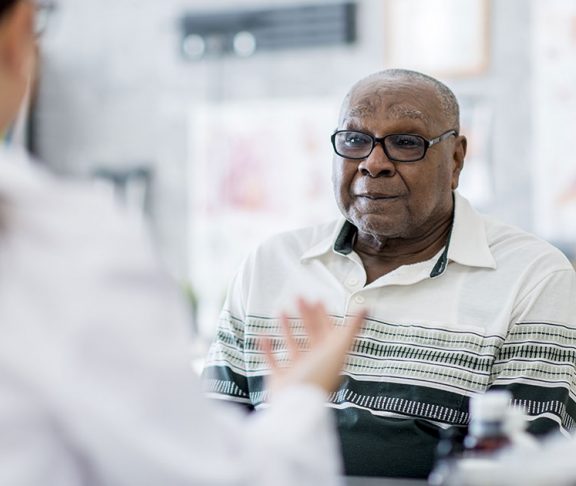More than 248,000 men will be diagnosed with prostate cancer this year, but not all of them will need surgery or radiation. Instead, many low-risk patients can safely be monitored through active surveillance.
“The term active surveillance implies that you have an untreated cancer,” says Christian Pavlovich, director of the prostate cancer active surveillance (AS) program at the Johns Hopkins Precision Medicine Center of Excellence for Prostate Cancer. “AS is appropriate if the cancer is not very aggressive and if we’re concerned that the treatments are potentially more toxic than the chance that the cancer itself will spread, so we withhold treatment for those men.”
With AS — now considered a standard of care in early disease states — doctors hold off on surgery or radiation because they don’t think the prostate cancer is likely to progress for a long time, if at all. The patient receives regular testing and is monitored over time.
Pioneering model
Johns Hopkins has been a leader in AS for over 20 years, especially because of its patient risk stratification work, which includes refining and optimizing its surveillance strategy. For example, prostate cancer patients under AS get their PSA checked every six months and MRIs done approximately every two years, as well as episodic prostate biopsies, all of which reassess whether the cancer may have progressed or gotten more aggressive.
They also developed a personalized predictive model called the Johns Hopkins ActiveCare Tool, an algorithm that predicts a patient’s longitudinal suitability for surveillance.
“Every time a patient enters the surveillance program, that person’s data goes into the hopper and informs the predictive model,” Pavlovich said. “The tool tells you what the chance is that there would be more aggressive cancer in the prostate; when that prediction, for example, becomes 20 percent, 30 percent, 40 percent or more, we increasingly worry that we should pull the trigger on intervention and offer curative treatment.”
Personalized precision medicine
Monitoring and treatment plans are tailored to a patient’s risk level and testing results, and patients get individualized risk predictions for whether they’ll have more aggressive disease.
Patients appreciate the surveillance approach because they do not have to worry about the side effects of prostate surgery and other treatments, including urinary incontinence and erectile dysfunction. However, surveillance is not for every man, as there can be anxiety in living with a known, albeit minimally aggressive, cancer.
Pavlovich, who has 20 years in the urology field, said that before surveillance existed, most localized prostate cancer patients were offered radical prostatectomy or radiation therapy. The surgeries were high risk, including blood loss that often required a blood transfusion, as well as residual high rates of scarring at the bladder outlet.
These days, surgery, if needed, is more precise than ever. Pavlovich said surgeries went from an open radical retropubic approach to a laparoscopic approach, and now to a robot-assisted laparoscopic approach, with finer instrumentation at every iterative change.
The five-year survival rate for prostate cancer patients is 97.5 percent.
Looking ahead
PSA is one of the most famous biomarkers. Now, Pavlovich and his colleagues are looking to see if there are other biomarkers that could indicate prostate cancer.
“The most exciting thing that I worked on in the lab the last five years is the ability to collect a patient’s urine after a prostate exam, and actually find or look to get prostate cancer cells in that urine,” he said, describing another breakthrough.
Pavlovich is optimistic about prostate cancer diagnosis and care.
“I think the amount of safety that’s been added to the diagnostic and therapeutic armamentarium to diagnose and treat prostate cancer has been unbelievable,” concludes Pavlovich. “We’ve reduced the number of people who need treatment, we’ve made the treatment safer, and in the last couple of years, we’ve even made biopsies safer.”
To learn more about active surveillance and precision medicine, visit Johns Hopkins.


